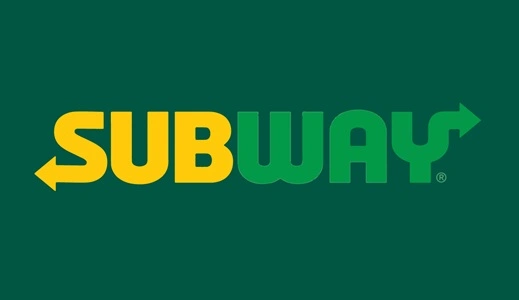Subway, the world’s largest submarine sandwich chain, has made a strong impression in India’s burgeoning quick-service restaurant (QSR) market. Known for its customizable sandwiches, fresh ingredients, and health-conscious offerings, Subway has become a preferred choice for those seeking a quick yet nutritious meal. Entrepreneurs looking to invest in the food industry often consider Subway as a lucrative franchise opportunity due to its relatively low setup cost and global brand reputation.
This article provides an in-depth guide to the costs, process, and potential profitability of owning a Subway franchise in India, along with the benefits and challenges associated with the venture.
Why Choose a Subway Franchise in India?

- Global Brand Recognition: Subway is a trusted brand with a presence in over 100 countries, ensuring instant customer trust and loyalty.
- Health-Conscious Menu: With a focus on fresh ingredients and low-calorie options, Subway appeals to the growing health-conscious consumer base in India.
- Customizable Offerings: Subway’s “build-your-own-sandwich” concept allows customers to personalize their meals, enhancing satisfaction and repeat business.
- Low Operational Complexity: Subway outlets are relatively easy to operate compared to full-service restaurants, with minimal cooking and lower staffing requirements.
Types of Subway Franchises
Subway offers different franchise models to suit various locations and customer preferences:
- Standalone Restaurants: Full-sized outlets in high-footfall areas offering dine-in, takeaway, and delivery services.
- Kiosk Models: Compact outlets in food courts, malls, airports, or railway stations focusing on takeaway services.
- Non-Traditional Locations: Outlets in locations like office complexes, colleges, and hospitals catering to niche customer segments.
Subway Franchise Cost in India
The cost of owning a Subway franchise depends on factors such as location, outlet size, and the type of franchise model. Here’s a breakdown of the investment:
Initial Investment
- Franchise Fee: The one-time franchise fee for a Subway outlet in India ranges from ₹6 lakhs to ₹12 lakhs, depending on the location.
- Setup Costs: The cost of setting up the outlet, including interiors, kitchen equipment, signage, and technology, typically ranges between ₹40 lakhs and ₹1 crore.
- Real Estate Costs: Leasing or renting commercial space in prime areas can cost anywhere from ₹50,000 to ₹2 lakhs per month, depending on the city and locality.
- Licensing and Permits: Securing food safety licenses, municipal permits, and other approvals costs an additional ₹1-5 lakhs.
Ongoing Expenses
- Royalty Fee: Subway charges a royalty fee of 8% of weekly gross sales.
- Advertising Contribution: Franchisees contribute 4.5% of weekly gross sales to national and regional advertising campaigns.
- Operational Costs: These include salaries, utilities, and raw materials, amounting to approximately ₹3-6 lakhs per month, depending on the outlet size.
Eligibility Criteria for a Subway Franchise
Subway has specific requirements for franchise applicants to ensure a successful partnership:
- Financial Stability: A minimum net worth of ₹50 lakhs to ₹1 crore and liquid assets of ₹30-50 lakhs are required.
- Real Estate Access: The ability to secure a prime location in a high-footfall area is critical.
- Business Experience: While prior experience in the food industry is preferred, it is not mandatory.
- Commitment to Standards: Franchisees must adhere to Subway’s operational guidelines, quality standards, and customer service protocols.
How to Apply for a Subway Franchise in India
- Submit an Application: Visit Subway’s official website and fill out the franchise inquiry form.
- Initial Screening: Subway reviews the application to evaluate financial capability, business experience, and location preferences.
- Franchise Agreement: Once approved, a franchise agreement is signed, outlining the terms and conditions.
- Training and Setup: Subway provides comprehensive training and support for outlet setup, menu management, and operational processes.
Profitability of a Subway Franchise in India
Subway franchises are known for their profitability due to their lean operational model and strong brand presence. Here’s a breakdown of what you can expect:
- Revenue: A Subway outlet in a prime location can generate monthly revenues ranging from ₹5 lakhs to ₹15 lakhs.
- Profit Margins: After accounting for expenses, profit margins typically range between 10-15%.
- Breakeven Period: Most Subway franchises achieve breakeven within 1-3 years, depending on the location and sales performance.
Benefits of Owning a Subway Franchise
- Established Brand: Leverage Subway’s global reputation and loyal customer base.
- Low Operational Complexity: Minimal cooking and efficient processes reduce staffing and overhead costs.
- Customizable Menu: Attract a wide range of customers with flexible and healthy food options.
- Extensive Support: Subway provides training, marketing assistance, and operational guidance to franchisees.
Challenges of Owning a Subway Franchise
- High Competition: The QSR market in India is competitive, with brands like Domino’s, McDonald’s, and KFC vying for customer attention.
- Location Dependency: The success of a Subway outlet is heavily influenced by its location and footfall.
- Royalty Fees: The combined royalty and advertising fees can impact overall profitability.
- Customer Retention: Maintaining consistent quality and service is critical for repeat business.
Conclusion
Investing in a Subway franchise in India is a promising opportunity for entrepreneurs looking to enter the QSR industry with a globally recognized brand. With its health-conscious menu, efficient operations, and strong market presence, Subway offers a reliable pathway to profitability. However, success requires careful planning, strategic location selection, and strict adherence to the brand’s standards.
By understanding the investment requirements and operational dynamics, you can make an informed decision and tap into the growing demand for quick, customizable, and healthy dining options in India.
Anantha Nageswaran is the chief editor and writer at TheBusinessBlaze.com. He specialises in business, finance, insurance, loan investment topics. With a strong background in business-finance and a passion for demystifying complex concepts, Anantha brings a unique perspective to his writing.


